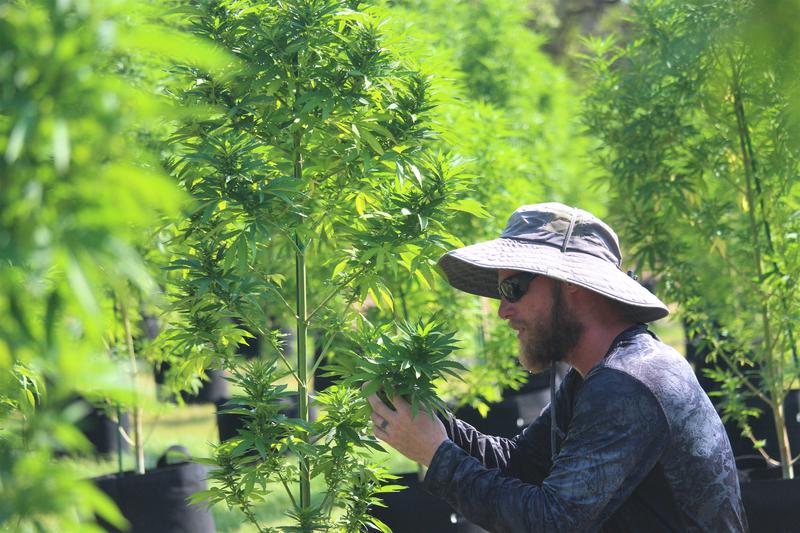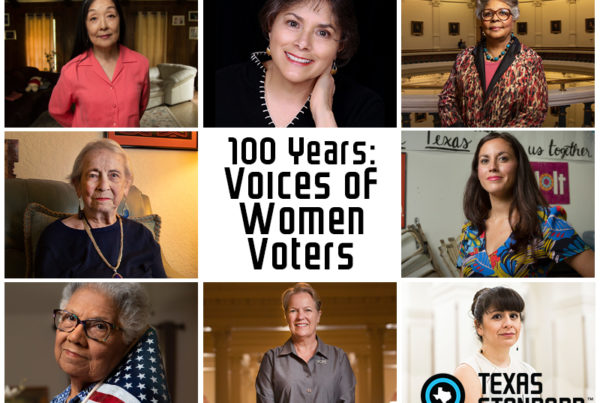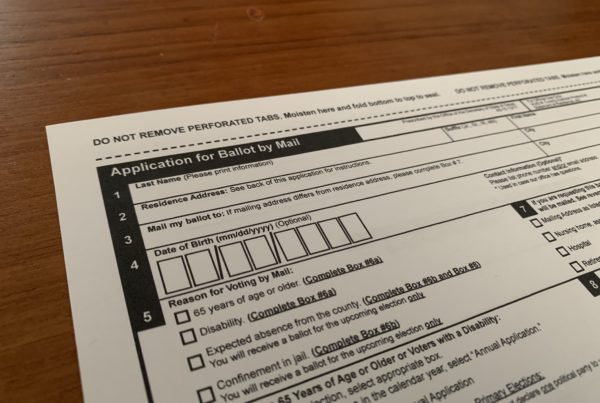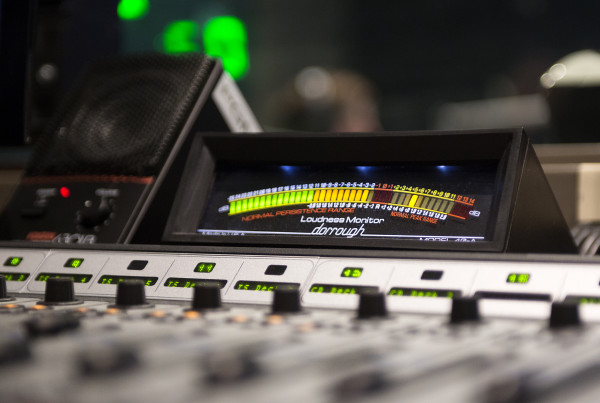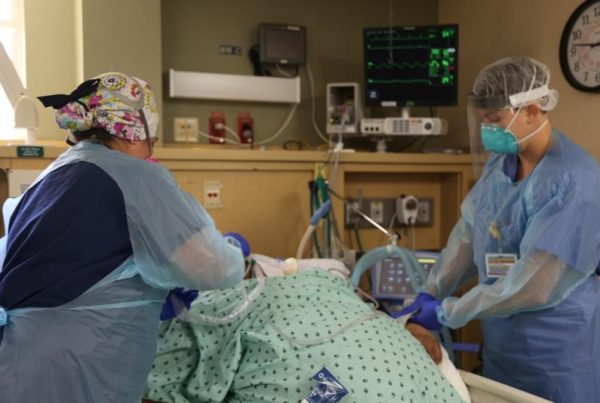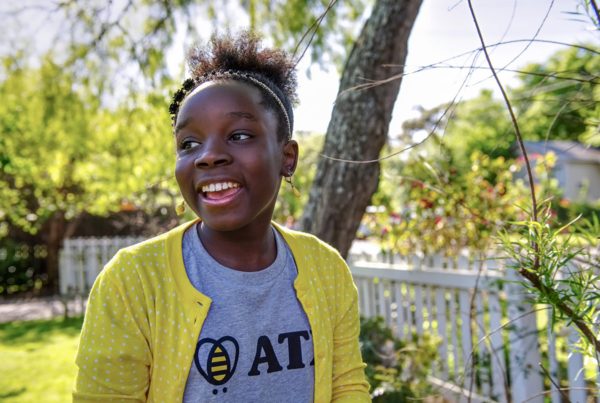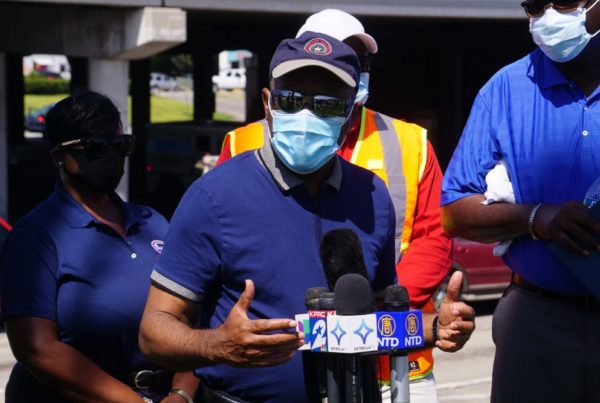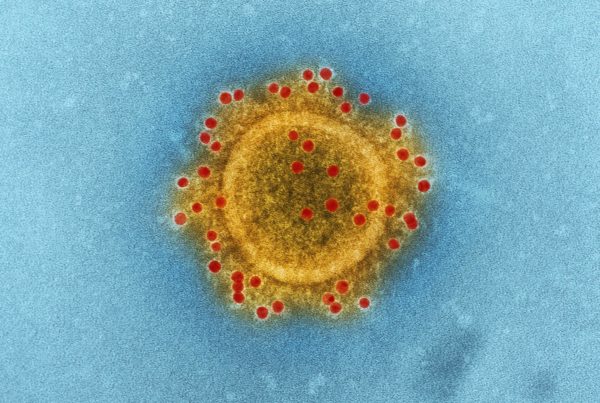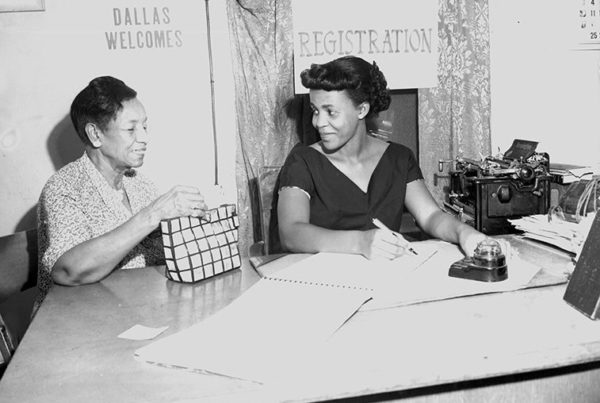From Texas Public Radio:
In Bergheim, Texas, just north of San Antonio, there’s a skunky smell in the air.
“You know, that’s a really good description. Skunky is a very typical terpene that is in most of these plants,” Austin Ruple said.
He’s the president and co-owner of Pur IsoLabs – a hemp and cannabidiol, or CBD company that grows hemp and manufactures retail CBD products.
Ruple stood next to a field of more than 300 hemp plants – a type of cannabis that’s rich in CBD, a legal compound that does not get users high. These plants contain no more than 0.3% THC – the psychoactive component that does get users high.
Pur IsoLabs is in Kendall County, where more than 100 people were hit with possession charges for possession of less than 2 ounces of cannabis over the past year. So, how does this whole field exist?
“You’re looking at permitted hemp in the state of Texas,” Ruple said.
A red state turns green: the cannabis industry in Texas
After the 2018 farm bill that legalized hemp passed at the federal level, Texas followed suit during its 2019 state legislative session. This farm and others around the state are preparing for the first-ever legal cannabis harvest since the plant was banned statewide in 1931.
In Texas and across the nation, demand for cannabis is up. Recreational marijuana sales in Colorado hit a record high in May, Rolling Stone reported the underground industry in New York City thrived while the city was shut down, and the budding hemp industry in Texas is attracting new customers.
Pur IsoLabs co-owner Jennifer Ruple said demand for the company’s CBD products has crept upward in recent months, especially in the online market.
Despite the Ruples’ good luck, the first crop of Texas hemp will be smaller overall than many expected. And in late July, growers received more bad news when the state announced a ban on smokable hemp. That means while the pandemic may have increased demand for CBD products, it’s unclear if hemp farmers in Texas will be able to meet it.
But why is there an increased demand?
The Ruples chose their words carefully when answering. Jennifer Ruple described the effect of certain products as an “enhanced benefit,” and Austin Ruple called CBD a “great balancing tool.”
The U.S. Food and Drug Administration has only approved CBD for certain uses, like treatment of epilepsy. While Pur IsoLabs doesn’t claim CBD can cure anxiety, many other industry players do make those claims.
Regulated research: CBD and THC in the lab
Kent Hutchison is a professor of psychology and neuroscience at the University of Colorado Boulder. He and his colleagues are working on a long-term, observational study of how CBD, THC or a combination of both affect anxiety.
“It’s definitely still up in the air,” he said. “Obviously people are theorizing that CBD might be helpful for anxiety, but there’s not really any good data yet — any high-quality data.”
Hutchison’s study might generate interesting findings, but it, too, won’t generate the highest quality data possible. It isn’t a double-blind, randomized clinical trial — the gold standard of pharmaceutical science. Instead, Hutchison and his colleagues will monitor participants who independently purchase and use CBD, THC or hybrid products.
“If we were to do an actual clinical trial, it becomes much much more difficult, given the regulatory hurdles that we have to deal with,” he said.
Those regulatory hurdles pop up because cannabis is still a Schedule 1 drug at the federal level, putting it in the most regulated category for high-risk drugs with no medical use.
“It definitely makes it more challenging,” said Igor Grant, a medical doctor and professor of psychiatry in the School of Medicine at the University of California, San Diego, where he directs the Center For Medicinal Cannabis Research.
Grant said the data is clear that THC — the psychoactive component in cannabis — does have a medical use for patients facing pain, weight loss and muscle spasms, among other conditions. But the Schedule 1 classification makes the research very difficult.
“From a medical research standpoint, it is not an appropriate classification any longer because, as I’ve mentioned, there is evidence for usefulness in several conditions,” he said.
While researchers say the Schedule 1 classification is inappropriate, THC does have potential harmful effects. It can increase anxiety in some people, and there is a correlative link between THC consumption and onset of schizophrenia or psychosis for people with a family history of those conditions.
Kevin Hill, the Director of Addiction Psychiatry at Beth Israel Deaconess Medical Center and an Associate Professor of Psychiatry at Harvard Medical School, uses CBD in his practice for a variety of purposes — including treatment of the small fraction of adults who develop cannabis addiction.
“To perhaps oversimplify a bit, (CBD) functions as a buffer of sorts to the harmful effects of THC, and so, that means that it has anti-anxiety properties, antipsychotic properties as well, along with many other things that we’re learning about it,” he said. “So, cannabidiol has tremendous promise, but it’s critical that it’s used in the right way. And for me, that means under the supervision of a physician.”
Hill says a lot of the CBD on the market isn’t accurately labeled, and there’s a risk of negative interactions with other drugs a consumer might be taking.
CBD recently became slightly easier to study after the Drug Enforcement Administration rescheduled it to the lowest category following the 2018 farm bill. But for researchers interested in studying CBD and THC together, they still have to go through a rigorous process involving interviews with federal agents, laboratory inspections and an obstacle course of bureaucratic red tape.
‘A very janus-faced relationship’ – how cannabis became a flashpoint of U.S. culture wars
Martin A. Lee is the author of “Smoke Signals: A Social History of Marijuana” and he’s the founder and director of Project CBD, a non-profit that promotes cannabis science and therapeutics.
“We have a very Janus-faced relationship with CBD — and with cannabis in general — when it comes to mental health issues and what the therapeutic possibilities could be, and what the cultural baggage still is,” he said.
The Schedule 1 status of marijuana goes back to the culture wars of the Richard Nixon administration, but the “cultural baggage” goes back even further.
In 1930, the Federal Bureau of Narcotics (FBN) was formed. But the country was already at the start of the Great Depression, and as it got worse, the federal government had to cut back on spending. Harry Anslinger, the first FBN commissioner, wanted to ensure the survival of the bureau.
A propaganda film called “Reefer Madness” came out. It drew battle lines between cannabis traffickers and cops. After an innocent group of teenagers smoke cannabis, one of them is murdered and another is committed to an “institution for the criminally insane” for the rest of his life.
In addition to the hyperbolic concerns about mental health, much of the propaganda-driven fear around cannabis was rooted in racism. Many campaigns targeted Mexican people by calling cannabis “marihuana” and claiming it made users lazy. Some propaganda targeted white supremacist fears about interracial relationships with racist messaging that cannabis would make white woman more likely to socialize with Black men.
“This strange, evil weed — ‘marihuana’ with an ‘H,’ which was the same plant… that was in almost every American household, using it for all these different things,” Lee said. “Because of a racist campaign, it was made essentially illegal marijuana, and the medicinal uses of cannabis were really, in some ways, lost to us. For centuries, humankind has had a connection with the plant. But because of marijuana prohibition, we lost that connection. And we’re in the process of relearning that today.”
Cannabis law enforcement in Texas
Nearly 100 years after “Reefer Madness,” law enforcement around cannabis still reflects institutional racism in the criminal justice system.
“According to 2018 data from the FBI, Texas arrested more than 70,000 people for marijuana possession (in 2018),” said Nick Hudson, a criminal justice policy analyst at the ACLU of Texas. “Despite the fact that Black and white people use marijuana at similar rates, Black people are arrested for marijuana possession at more than 2.6 times the rate of white people.”
Since 2018, many large cities and counties have reduced arrests and prosecution of low level cannabis possession. But the state is still a patchwork of policies, with some counties continuing to enforce the letter of the law.
“We have also seen increases in marijuana arrests in some other parts of the state,” he said. “The areas we’re seeing increases are in our more rural and suburban communities, while urban areas are reducing marijuana possession arrests, generally.”
And with bonds for misdemeanor cannabis possession charges running into the hundreds of dollars, many people who are arrested for cannabis are held in jail solely because they don’t have the resources to pay bail.
Meagan Harding is a senior attorney with the Texas Civil Rights Project’s criminal justice reform project.
“What people don’t realize is there’s a difference between county jail and prison,” she said. “And more than half of the people that are incarcerated right now in Texas are pre-trial, so they have not been convicted of anything.”
Harding said the convergence of COVID-19 and disproportionate incarceration has had a profound impact on communities of color.
“I think what you’re seeing now is years and centuries of oppression of Black and brown communities now being compounded by a lot of the systemic oppression that we have been fighting against for years,” she said. “And you see the intersection of all of those things coming together in the criminal justice system: so you see health disparities coming together, you see poverty, economic disadvantage coming together all at the same time to create the perfect storm.”
While Black and brown people continue to flow through the court and prison system for cannabis-related charges, the mostly white-owned cannabis industry across the country is expanding. But the legal status of the plant remains hazy.
At the federal level, certain forms of cannabis are only legal for certain uses. At the state-level, only South Dakota still has an outright ban on all cannabis and CBD for any use. The rest of the country is a mishmashed matrix of regulations around cannabis.
Dominic Anthony Walsh can be reached at Dominic@TPR.org and on Twitter at @_DominicAnthony.


